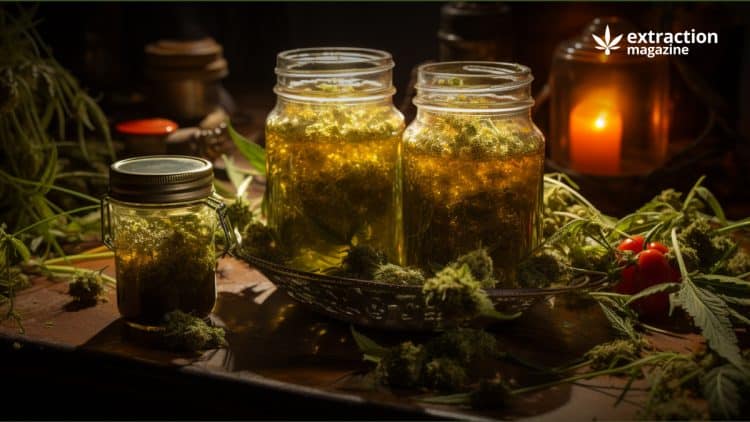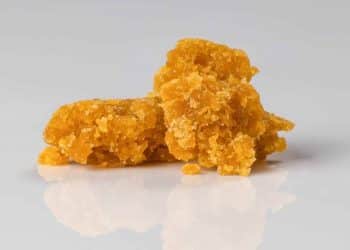Rick Simpson Oil (RSO)’s origin story sounds so miraculous it’s almost movie-esque. But some movies are based on a true story.
Rick Simpson
Rick Simpson worked as an engineer in a Canadian hospital in 1997, where he had a work-related accident, fainting and falling off a ladder as a result of inhaling toxic asbestos fumes in a boiler room.
None of the traditional medications he was prescribed seemed to work in relieving the dizzy spells and tinnitus that ensued. It was then that Simpson turned to cannabis, despite its illegal status at the time and against his doctor’s advice.
Simpson’s leap of faith paid off. His decision to use medical cannabis was a resounding success.
But as fate would have it, this was just the beginning of Simpson’s health problems, but on the plus side, he had merely scratched the surface of the medical potential of cannabis.
He was diagnosed with skin cancer in 2003. Even though medical cannabis was legal by then in Canada, the accumulated stigma surrounding it couldn’t just be overruled by the law as well. Simpson couldn’t find a doctor who would implement cannabis into his treatment, so he took matters in his own hands.
Inspired by a 1975 study, published in the Journal of the National Cancer Institute, in which cannabinoids and THC in particular displayed antineoplastic activity, meaning an inhibitory effect on tumor growth in mice, he created RSO.
Too Good to Be True?
As the legend goes, he applied a bandage of his creation on his cancer growth and left it for four days, after which the tumor had disappeared. It all sounds almost too good to be true, perhaps reminiscent of a religious miracle story.
But then again, he is basically the living proof, and his motive for lying is somewhat feeble, since he never patented RSO and has even posted detailed instructions on how to make it on his website. As he puts it himself, “I want people to know how to heal themselves.” (It’s important to note that the process is dangerous and involves some flammable materials, so only those with solid experience in similar forms of extraction should attempt it).
Granted, he has released a couple of books with his story and medical cannabis use and production know-how. Nevertheless, it seems as if profit was his main goal, there would be better ways to milk the opportunity.
What Is RSO?
RSO is a highly potent, full-spectrum marijuana extract with up to 90% THC levels. Simpson recommends using indica-leaning strains as the source material because of their higher levels of THC.
It’s basically the happy medium between a THC distillate, the purest THC extract whose THC levels can reach up to 99% but at the cost of other cannabinoids and their coveted synergy, and a full-spectrum marijuana extract that does capture the entire cannabinoid profile of the plant material, but its THC levels rarely, if ever, exceed 80%, usually averaging in the ballpark of 50-70% range or less. RSO should provide the best of both worlds – the X factor that is the synergy between different cannabinoids, known as the entourage effect, reinforced by a more powerful THC punch.
If RSO was an athlete, it should, at least in theory, have both the athleticism and the technique.
How Does Rick Simpson Oil Look Like?
There is no single way to make RSO, so the appearance of the end result isn’t uniform, either.
The color can range from amber to borderline black, whereas the texture can be like lip balm, goo, or almost solid.
How Is Rick Simpson Oil Used?
Even though Simpson first used his creation as a topical with great success, RSO can be consumed in a number of ways.
Topically
If you will, indeed, apply RSO topically, it’s best to bolster it with a band aid or bondage to ensure optical absorption, just like Simpson did.
Edible
RSO can also be ingested, which basically turns it into an edible. This method is better suited for internal conditions, such as auto-immune diseases or chronic pain. Keep in mind ingesting cannabis products is trickier than other methods of consumption on several levels.
Taking the roundabout way to the bloodstream through the gut means edible cannabis takes longer to kick in and its bioavailability decreases, as the gut and its first-pass metabolism take their cut.
Moreover, the first-pass metabolism coverts THC, a.k.a. Delta-9-THC, into Delta-11-THC, which has some psychedelic-like traits, hence the trippier experience that edibles have become famous for.
All that, combined with its high potency, makes edible RSO a unpredictable force to be reckoned with. Start low and take it slow, increasing the dose gradually until you find the right dose.
Inhalation
It’s best to add RSO to other flower rather than consuming it by itself because of its consistency. You can add a little grain of RSO to a bowl or a thin strip to a joint.
Cancer-Related Research
Research on cannabinoids’ anti-cancer potential is growing, with most studies having promising results and THC being the usual suspect.
Despite Simpson’s positive results, that doesn’t mean RSO, or cannabis in general, can be used to treat cancer. However, it seems to have all the makings of a fantastic adjunct therapy – it is both direct and indirect anti-cancer.
High THC concentrations, however, increased cancer cell proliferation rather than apoptosis, contributing to cancer progression.
This is all a reminder that cannabis can be a double-edged sword. Your doctor should help you coordinate RSO with other, traditional treatments if you intend to use it.












